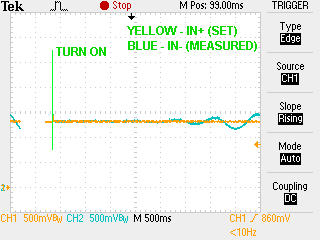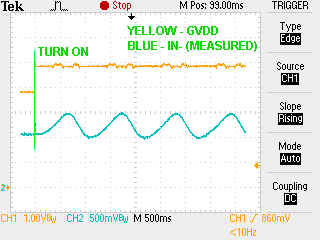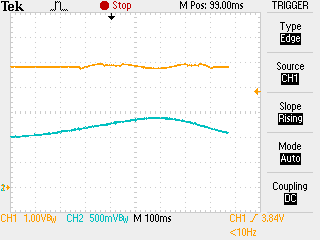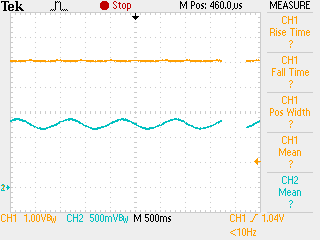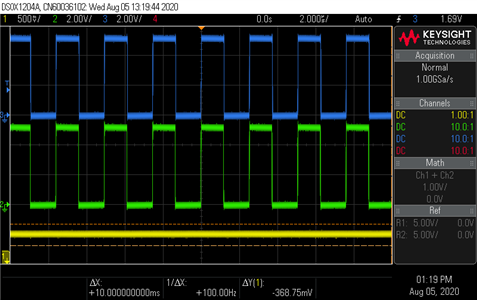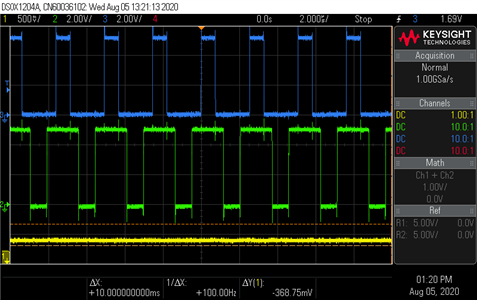Hi Team,
We use DRV595 as a TEC driver. We are faced with unstable operation of the device with some load.
The output fluctuates after reaching target temperature. If the set and measured temperatures are equal, the output starts to fluctuate a few seconds after turning on.
We use the load with built-in Peltier element and NTC sensor. We can not change or modify internal configuration of the load.
The device operates perfect with most loads but we have a few cases with fluctuations.
The problem is that there is another TEC controller that works fine with all loads without any changes in setup. Therefore, we cannot tell customers that the issue is the load. The issue is in our TEC driver on DRV595.
The scheme is:
- VCC = 5V, single power supply operation
- 1SPW mode
- master mode, 32 dB gain
- 400 kHz frequency
- differential input
We tried to change it did not bring any effect:
- 600 kHz and 1000 kHz frequency
- BD mode
- output filter configuration (increase and decrease inductance and capacitance)
We also tried to swap outputs and differential inputs - no effect.
Decrease in gain has some effect. But even with a grain of 20dB, the circuit goes into stable operation after several minutes. This is unacceptable.
Achieving stable operation in a typical configuration with most of the loads takes a few seconds.
We found that the voltage drop on the problem load is slightly less than on others - 1.7V @ 1A vs 2.1V @ 1A. We added 1 Ohm in series to Peltier element and got a significant effect. In this setup without any additional changes the circuit goes into stable operation after a few tens of seconds. But we think this is not the best solution. And still, the circuit goes into stable operation much longer than usual.
We also noticed that the GVDD voltage is throbbing when the device fluctuate. We do not know if this is normal.
We can try to change the control scheme to a single-end input, but it will take a much time and require redesign the pcb.
Now we are looking for a simpler and faster solution and we hope for your help. Could there be a problem in the load impedance or in the GVDD voltage throbbing?
Self-excitation of fluctuations when the inputs are equal:
GVDD voltage throbbing:
DRV595 shematic:


